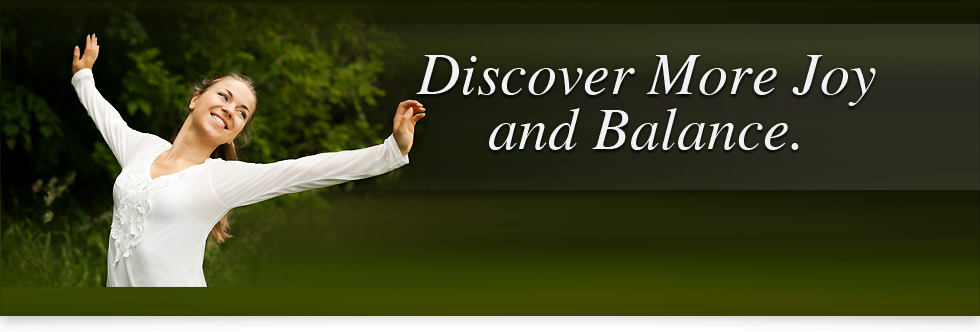Although breathing is essential to life, it’s unconsciously regulated by the autonomic nervous system, which means that you may not give it a second thought. However, there is growing scientific evidence that supports the use of breathing exercises for a variety of mental and physical health concerns. Find out about these evidence-based benefits and the various breathing techniques, including yoga breathing exercises.
What is a breathing exercise?
According to the National Institutes of Health, deep breathing exercises are defined as an active process involving conscious regulation of inhaling and exhaling. (12) Components of breathing exercises may include:
- Changing the depth of breathing (e.g., deep, shallow)
- Changing the rate of breathing (e.g., quickly, over a certain duration of time)
- Changing the way air is inhaled (e.g., mouth, nostrils)
- Controlling body parts (e.g., relaxing or contracting the stomach) (12)
In Eastern traditions, voluntary controlled breathing techniques are referred to as Pranayama, which translates to “the stop/control” or “the rising/expansion” of breath. Pranayama is an essential part of yoga and several meditation practices. (17)

Pranayama is the Sanskrit word for “control of breath”.
What is the purpose of breathing exercises?
Breathing exercises are used for therapeutic purposes, including relaxation and improving well-being. (17) Changes to breathing affect the autonomic nervous system (ANS), which regulates involuntary functions such as digestion, heart rate, and urination. (7)(17) Research has shown that deep breathing exercises, including certain yoga breathing exercises, can influence physiological processes by decreasing the stress response, activating the parasympathetic system (the “rest and digest” response of the ANS), and stimulating the release of certain hormones. (3)
Deep breathing exercises for anxiety
Relaxing breathing exercises may benefit individuals with anxiety and mood disorders, such as depression. Researchers propose that breathing techniques may be able to reduce negative emotions and sympathetic (“fight or flight”) dominance of the ANS, resulting in mental health improvements. (7) One randomized controlled trial in individuals with anxiety found that eight weeks of practicing diaphragmatic breathing relaxation (DBR), a form of deep breathing, was associated with reduced anxiety scores, as well as reduced heart and breathing rates, which are considered to be indicators of a relaxed state. (4)
Breathing exercises for stress
Breathing exercises for stress relief may include yogic breathing and slow-paced breathing techniques. (2)(17) A systematic review of slow breathing interventions found that these techniques lead to specific parasympathetic and central nervous system (CNS) activities associated with improved psychological well-being. (17) Additionally, a breathing technique called Sudarshan Kriya Yoga (SKY) has been shown to treat stress-related conditions and has been used in post-traumatic stress disorder (PTSD) interventions following mass disasters. (2)
Breathing exercises for sleep
Relaxing breathing exercises, commonly used to help with sleep, are supported by scientific evidence that demonstrates their effects on the nervous system and cardiovascular function. One 30 day study in healthy individuals compared the effects of 15 minutes of slow-paced breathing assisted by a smartphone breathing application with 15 minutes of social media use every evening before bed. Compared with social media use, the results indicate that slow-paced breathing improved self-reported sleep quality as well as overnight cardiovascular function assessed by a portable electrocardiogram (ECG) device. (11)
Breathing exercises for asthma
Breathing exercises for asthma are generally designed to reduce hyperventilation (irregularly fast breathing). A review of trials in asthmatic children identified certain approaches, including the Buteyko technique, the Papworth method, and Yoga and/or Pranayama techniques, that may each improve breathing patterns in chronic mild and moderate asthma. (13) Similarly, a systematic review of studies that involved 2,880 patients with asthma concluded that breathing exercises may improve lung function, symptoms of hyperventilation, and quality of life. (14)
Did you know?
After following a breathing exercise intervention for ten minutes daily for one month, approximately two-thirds of individuals with asthma reported reduced inhaler use. (9)
Breathing exercises for COPD
Certain breathing exercises may benefit individuals with chronic obstructive pulmonary disease (COPD) by improving respiratory muscle function and reducing shortness of breath. A Cochrane systematic review found that four to 15-week interventions of diaphragmatic, pursed-lip, and yoga breathing exercises were associated with a significant improvement in six-minute walk distance when compared to no intervention. However, the effects on the shortness of breath and health-related quality of life were inconsistent. (5)

Breathing exercises may help improve symptoms in respiratory conditions such as asthma and COPD.
Breathing exercises for high blood pressure
One review study found that Pranayama exercises were associated with reduced blood pressure in both short-term studies (single breathing exercises) and long-term studies (breathing exercise programs). Breathing exercises to lower blood pressure may include various practices that manipulate the nostrils during breathing and slower-paced breathing techniques. (1)
Pregnancy breathing exercises
Research has shown that certain breathing exercises may reduce pain during childbirth. One randomized controlled trial of 250 pregnant women found that the group that received training and implemented breathing exercises during labor had lower pain scores and a shorter duration of labor and delivery compared to women who did not receive training. (16)
Types of breathing exercises and how to implement them
Scientific literature suggests that breathing exercises should be taught by a trained teacher and practiced daily to maximize their benefits. (2) Certain forms of meditation breathing exercises, such as holotropic breathwork, may even be guided by a trained facilitator. (17) We summarize several popular breathing exercises below, which include individual techniques and methods that combine several breathing exercises in succession.
Diaphragmatic breathing exercises
Diaphragmatic breathing is a method that involves contracting the diaphragm muscle, found between the thorax and the abdomen, in order to move air into the body. This technique may increase the length of the diaphragm, improve exhalation efficiency, and relax the ANS. (4)
Papworth method
Papworth Method was developed in the 1960s and is a series of relaxation and breathing exercises designed to address dysfunctional breathing patterns. The Papworth method has five components, including breathing training, education about the physical stress response, relaxation training, integration of techniques into daily life, and daily home exercises that follow an audio recording. A randomized controlled trial in adults with asthma found that after six months of treatment, the Papworth method appears to improve dysfunctional breathing, respiratory symptoms, and mood when compared to usual care. (6)
Pursed lip breathing
Pursed lip breathing is a strategy used to address shortness of breath. This method is done in an upright position (standing or sitting down) with a relaxed neck and shoulders. An inhale is taken through the nose for at least two seconds with the mouth closed. Then, with lips still closed but pursed, similar to when whistling, air is gently exhaled through the mouth for at least four seconds. This pattern is repeated until breathing returns to normal. (15)
Slow-paced breathing
Slow-paced breathing involves intentionally slowing the breathing rate down with the help of an auditory, kinesthetic (tactile), or visual pacer, such as an audio recording or a breathing app. The exhalation should last slightly longer than the inhalation, with six breath cycles per minute. Comparatively, a normal breathing rate is generally between 12 to 20 cycles per minute. (11)
Yoga breathing exercises
There are a variety of yogic breathing practices that have been traditionally used to help balance the autonomic nervous system and influence physiology, such as the body’s release of hormones. (3)

Yoga incorporates various breathing techniques, including alternate nostril breathing.
Did you know?
Yoga, a practice that originated in India, involves Pranayama, in addition to balancing poses (asanas), guided meditation and/or relaxation (dhyana), as well as muscle stretching and relaxing. (10)
Alternate nostril breathing
Commonly known as alternate nostril breathing, Nadhi Suddhi begins by making a relaxed fist with the right hand and releasing the thumb and last two fingers, followed by these steps.
- An exhale is taken through both nostrils
- The thumb is used to cover the right nostril
- An inhale is taken for a count of four through the left nostril
- An exhale is taken through the left nostril for a count of eight
- The left nostril is closed by the ring finger
- An inhale for a count of four is taken through the right nostril
- The right nostril is used to exhale for a count of eight
- The right nostril is covered with the thumb
- An inhale to a count of four is taken through the left nostril
- This cycle is continued for up to three minutes (8)(10)
Shining skull breathing
Shining skull breathing, also known as Kappalabhati, is a type of rapid abdominal breathing that involves rounds of sudden, forceful exhaling through the nostrils, followed by relaxing the abdomen and allowing the air to naturally return to the lungs (without force). This is generally done at a rate of one breath per second, repeated several times per round, with rest periods of thirty seconds between rounds. (10)
Sudarshan Kriya yoga
Sudarshan Kriya yoga (SKY), estimated to be practiced by over six million individuals worldwide, is a sequence of four specific breathing techniques. The techniques include Ujjayi (victorious breath), Bhastrika (bellows breathing), “om” chanting, and Sudarshan Kriya (cyclical breathing). The four components of SKY are completed while sitting on a chair or cross-legged on the floor, and each component has different corresponding asanas (physical postures). (3)
Three-part breath
Also referred to as three-part breath, Dirga Swasam is a diaphragmatic breathing method. The first step is to inhale through the nose, expanding the abdomen, followed by the ribcage and then the collarbones. The next step is to exhale, by contracting the collarbones, followed by the rib cage and lastly the abdomen. This process is repeated for the duration of the breathing exercise. (10)
The bottom line
Calming breathing exercises may improve anxiety, stress, sleep, respiratory conditions, elevated blood pressure, and pain during childbirth. Download a handout on breathing exercises. In order to implement any breathing exercise safely and correctly, seek out guidance and training from a qualified professional.















